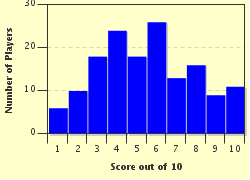Quiz Answer Key and Fun Facts
1. Rich Ancient Egyptians were buried with many shabti figures. What, however, did the Egyptians believe these shabtis would do?
2. When the tomb of Tutankhamun was excavated by Howard Carter in 1922 and 1923, many beautiful objects were found. Among these objects were shabti figures. How many, however, were found in his tomb?
3. The "Book of the Dead" is found buried with the deceased in Ancient Egypt. The Egyptians, however, had a different name for these sacred texts. What did they call the "Book of the Dead?
4. Many impractical/unusable items have been found in Ancient Egyptian tombs. These include gold sandals, fragile furniture, and scribal pallets that don't work or hold ink. Why is this?
5. Stone "false doors" are frequently found within tombs. What is the function of these doors?
6. An adze, a "peseshkaf" (spooned blade), amulets, an arm-shaped ritual censer, and a serpent-head blade are used by a priest in a ceremony associated with burial. What ceremony is it used in?
7. Which of the following are NOT commonly found in New Kingdom tombs?
8. Ankhs, djed pillars, and the was scepter are three common symbols seen in tombs, temples, and personal items in Ancient Egypt. They represent a)stability, b) eternal life and c) power. Which, however, represents which?
9. The Ancient Egyptians had three different forms of writing: hieratic, demotic, and hieroglyphs. Which of these, however, was normally used for books of the dead, decorating the tomb, and on jewelry?
10. In Egyptian tombs of nobles, there are many passages written about the deceased and their life. The Egyptians, however, had a tendency to focus on certain aspects of life, and frequently repeated, within tombs of nobles, a certain aspect of the deceased's life. Which aspect was this?
Source: Author
robinhayden
This quiz was reviewed by FunTrivia editor
bloomsby before going online.
Any errors found in FunTrivia content are routinely corrected through our feedback system.


